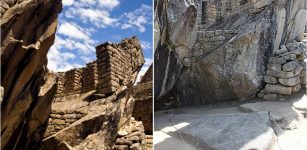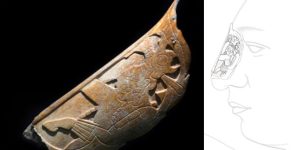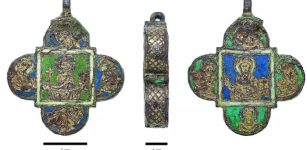On This Day In History: Battle Of The Egadi Islands Took Place – On Mar 10, 241 BC
AncientPages.com - On March 10, 241 BC, the Carthaginian relieving fleet was defeated near the Aegates Islands off western Sicily, and the event is known as the Battle of the Egadi Islands.
It was the final battle of the First Punic War in 241 BC.
Detail of the rostrum of a Roman ship recovered in 2008 in the sea between Levanzo and Trapani. Image credit: Markos90 - CC BY 2.0
By the winter of 243/242, the Roman treasury was exhausted. However, the Romans had sufficiently recovered from the debacle of 249 to build yet another fleet of 200 warships.
Successful ground and naval assaults are launched against Carthaginian fortresses at Lilybaeum and Drepanum in Sicily.
The Romans appeared off the coast of Sicily in the summer. In 241, the fleet of 200 quinqueremes placed in command of Gaius Lutatius Catulus was sent to renew the blockade of Lilybaeum. The surprised Punic fleet was forced to sail home. It allowed the Romans to take the harbor at Drepana (Trapani). The siege works were installed to blockade the city and the roadsteads near Lilybaeum. Meanwhile, he drilled in naval manoeuvers every day.
The Carthaginians managed to reactivate their fleet, send a force of 170 ships loaded with grain, and seek to relieve Hamilcar's troops in Eryx.
The fleet was out of practice, burdened with supplies for the garrison ND, and understaffed. The commander, Hanno, planned to reach Eryx, unload the corn to lighten the ships and take on the mercenary troops of Hamilcar Barca and then seek out the Roman fleet.
Hanno's plan failed.
At daybreak, Lutatius embarked his best troops and sailed to the Egadi Islands) near Lilybaeum to intercept. He was unsure whether to engage but ultimately decided that this would be preferable to fighting the same force after Carthage could strengthen it. So upon seeing the enemy at full sail, he put to sea at once, quickly maneuvering his fleet into a single line facing the enemy. Seeing this, the Carthaginians lowered their masts and closed them. The Romans benefited from removing all heavy equipment from their vessels, and their training now paid off. In contrast, the laden Carthaginian galleys were challenging to maneuver, and their marines were merely raw recruits.
The Romans lost 30 ships, and another 50 were damaged. 50 Carthaginian ships were lost, 20 with all hands, while 70 were captured. The Romans had taken nearly 100,000 prisoners of war, and Carthage was forced to sue for peace shortly after that.
Thus, the Carthaginian fleet was defeated near the Aegates Islands off western Sicily.
Catulus, who had decided to attack, shared in the triumph, though a wound prevented him from participating in the operations.
The Carthaginians subsequently crucified the naval commander Hanno.
AncientPages.com





















